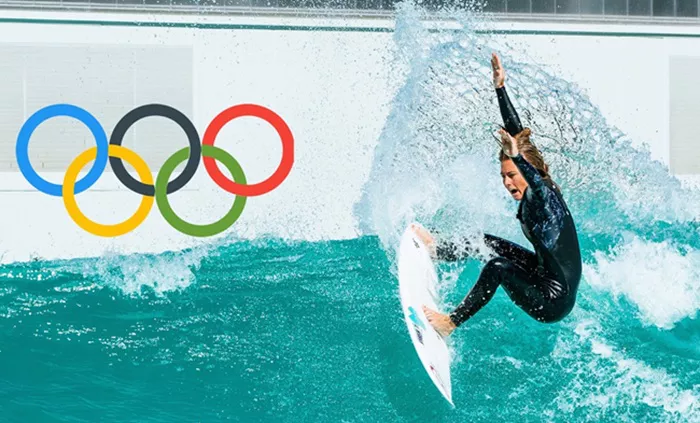As the Los Angeles 2028 Summer Olympics approach, the spotlight is now firmly on the San Clemente area, set to host one of the event’s most anticipated competitions—surfing. The prestigious Lower Trestles at San Onofre State Beach will serve as the location for Olympic surfing, cementing San Clemente’s position as a global hub for the sport.
The addition of surfing to the Olympics in 2020 was a landmark moment for the sport, but the conditions at Tsurigasaki Beach in Japan—marked by underwhelming, shoulder-high waves—raised questions about surfing’s potential on the Olympic stage. However, the Paris 2024 Olympics is poised to showcase the thrill of competitive surfing with the inclusion of Teahupo’o, Tahiti’s renowned wave, proving that the sport’s Olympic future can be just as exciting as it is in local contests.
A Vision Realized: From Dream to Reality
Greg Cruse, a longtime San Clemente resident and former CEO of USA Surfing, has long envisioned the area as a central hub for competitive surfing. With the 2028 Games scheduled for Los Angeles, Cruse seized the opportunity to position Lower Trestles as the ideal location for Olympic surfing.
“I moved to San Clemente in 1987 to surf Lowers,” Cruse shared. “It’s always been a special wave. When the Olympics announced that LA would host in 2028, I saw an opportunity.”
Lower Trestles, famed for its consistent swell and ideal conditions, already attracts some of the world’s best surfers. The location is a prime choice, particularly given that nearby Huntington Beach, traditionally known for its surf events, is often unreliable during the summer months, with flat conditions or swells that do not bring out the best waves.
“Lowers is a swell magnet,” Cruse explained. “A small swell that would barely break at Huntington can still deliver head-high waves at Lowers. If we get a good bombing swell, it will be incredible.”
In addition to its ideal waves, the athletes themselves were enthusiastic about the venue. According to Cruse, virtually every surfer he spoke with expressed their preference for competing at Lower Trestles, a wave they know intimately and train on regularly. The World Surf League’s Championship Tour, which has held its finals at Lower Trestles for years, boasts numerous competitors from the San Clemente area, further solidifying the locale’s connection to the sport.
A Decade of Preparation
Cruse’s efforts to bring the Olympics to Lower Trestles began nearly a decade ago. In 2016, during a California State Parks planning meeting, he proposed lifting the summer event restrictions at Lowers to allow for large-scale competitions. His idea was met with immediate support, including from Rich Haydon, the State Parks Superintendent at the time, who expressed willingness to help facilitate the plan.
When the International Olympic Committee awarded the 2028 Games to Los Angeles, Cruse’s vision took shape. He worked closely with the International Surfing Association (ISA), LA28 organizers, and a broad coalition of local officials—including U.S. Representative Mike Levin, California State Parks South Sector Superintendent Scott Kibbey, and San Clemente Mayor Victor Cabral—to secure the venue.
Addressing Concerns: Accessibility and Environmental Impact
As with any major event, concerns were raised about the accessibility of Lower Trestles, especially for Paralympic athletes, and the potential environmental impact. Cruse was quick to address these concerns, drawing from his extensive experience organizing events at Lowers. He assured stakeholders that the event would be inclusive, with accessible mats for athletes to navigate the cobblestone beach, and that local wildlife and conservation areas would be treated with the utmost respect.
“We’ve always made accommodations for wildlife and ensured minimal disruption to the park during past events,” Cruse emphasized. “This will be no different.”
Another concern was the potential for large-scale infrastructure development, which could disrupt the natural surroundings. Cruse reassured the public that the Olympics would not result in mega-structures; instead, the plan focuses on maintaining a small, manageable footprint with fewer than 4,000 spectators and minimal environmental impact.
To mitigate concerns, Cruse outlined a sustainable approach that would include the use of existing facilities. For instance, San Mateo Campground could serve as a temporary athlete village, and nearby Concordia Elementary School might be repurposed as a media center.
Lasting Benefits for San Clemente
Hosting the surfing competition during the 2028 Olympics promises to bring lasting benefits to San Clemente. The global exposure of the event is expected to bolster the town’s status as a key destination for surf culture. Already, international sports teams have inquired about renting local facilities for training camps.
Local schools and venues are likely to benefit from partnerships or improvements to infrastructure. Moreover, as Cruse notes, the 2028 Olympics will showcase San Clemente to the world as “the heart of American surfing.”
“San Clemente is not just a surf town,” Cruse said, “it’s where surfing’s soul resides. This is our time to show the world what we’ve always known.”
As preparations ramp up, the excitement in San Clemente continues to build, with the promise of the world’s best surfers competing in a venue that is not only iconic but also steeped in the history and future of the sport. The 2028 Olympic Games will undoubtedly mark a new chapter for surfing—one that will forever be linked to the waves of Lower Trestles.

